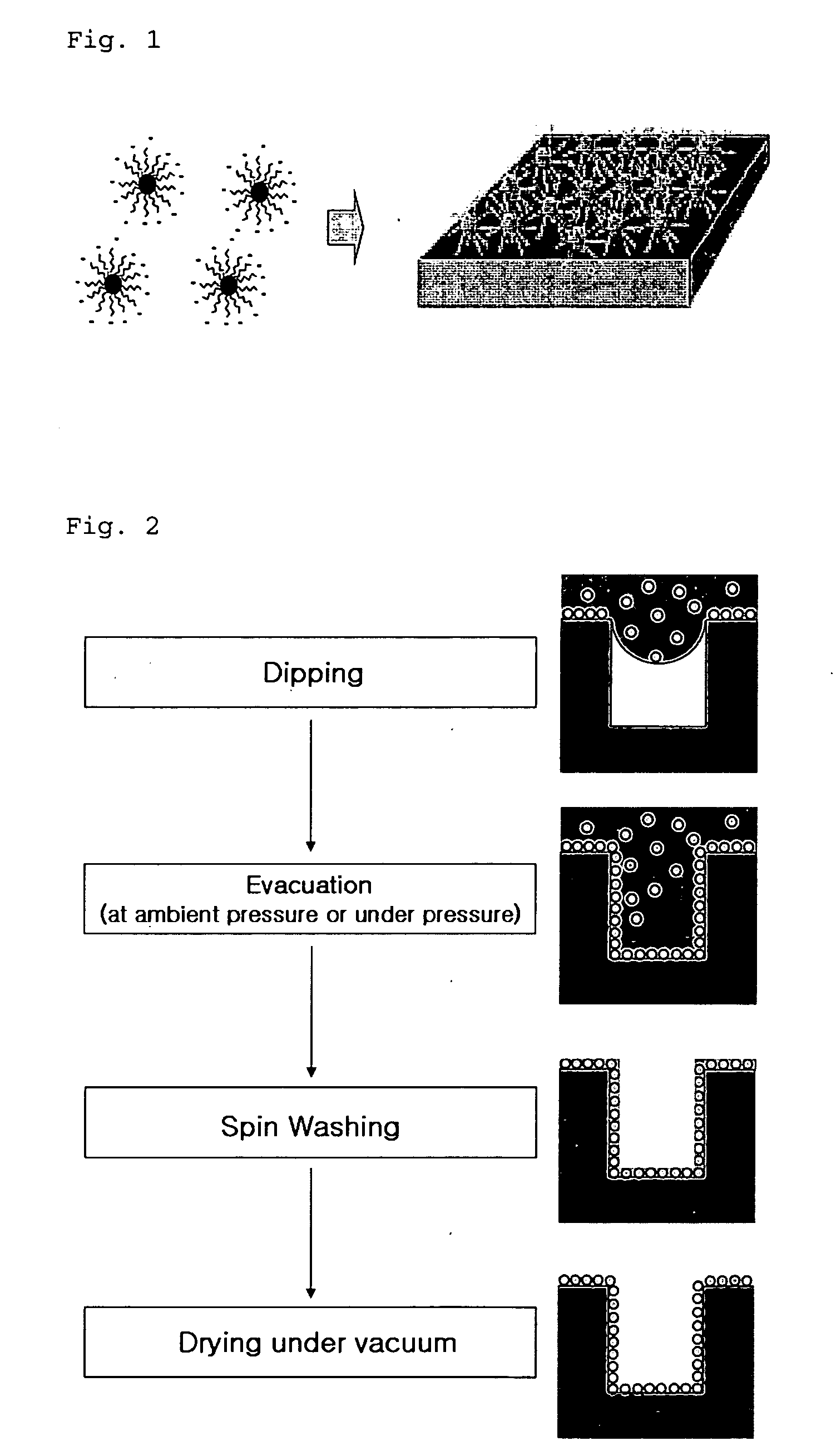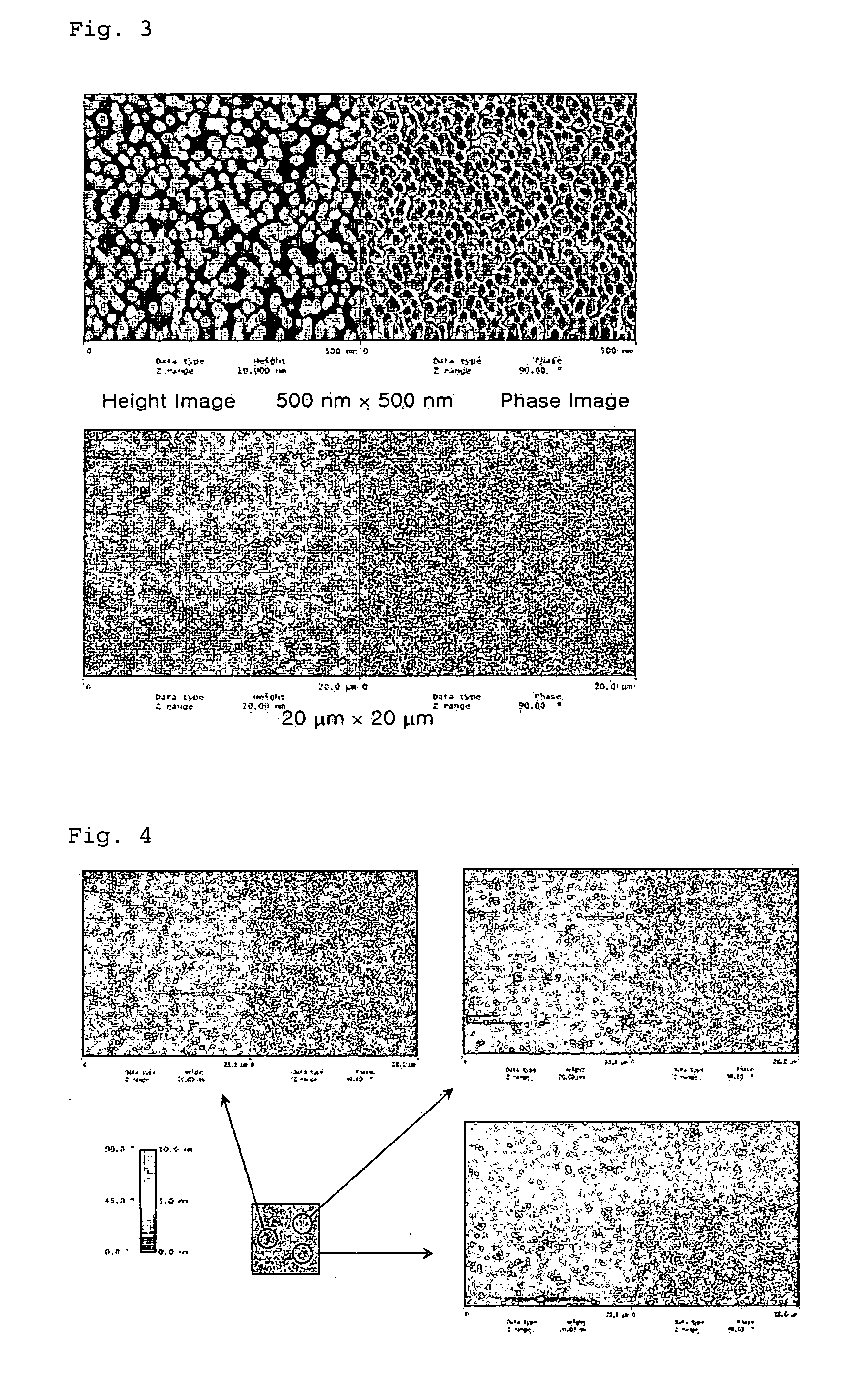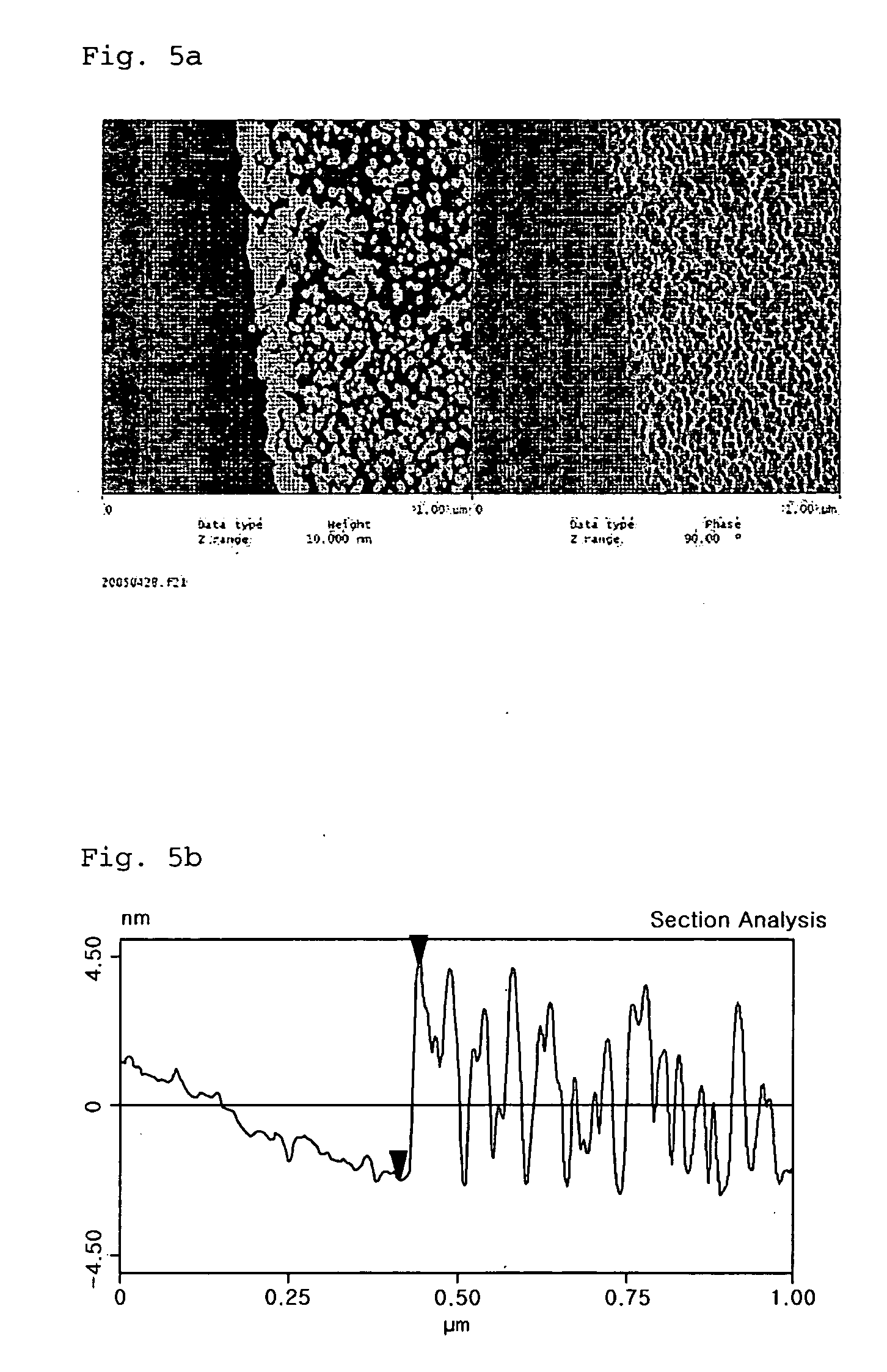Nanoparticle thin film, method for dispersing nanoparticles and method for producing nanoparticle thin film using the same
- Summary
- Abstract
- Description
- Claims
- Application Information
AI Technical Summary
Benefits of technology
Problems solved by technology
Method used
Image
Examples
example 1
Dispersion of Nanoparticles
[0092] 1.8424 g of mercaptoacetic acid (MAA) may be dissolved in 8 ml of chloroform and then the solution may be heated to about 70° C. 3 ml of CdSe nanoparticles may be slowly added to the solution at 70° C. while rapid stirring. The mixture may be reacted while stirring under reflux conditions at about 70° C. for approximately 3 hours. After completion of the reaction, the reaction mixture may be centrifuged at approximately 3,000 rpm to obtain a precipitate. The precipitate may be dispersed in chloroform and centrifuged at about 3,000 rpm for approximately 5 minutes. The dispersion and / or centrifugation may be repeated about seven times. The washed nanoparticles may be dried under vacuum for about 6 hours, and dispersed in a Tris buffer (0.1M, pH=9). The dispersion may be centrifuged at about 15,000 g for approximately 10 minutes to reduce nanoparticle aggregates.
example 2
Production of 2-Dimensional Monolayer Nanoparticle Thin Film
[0093] A 12-inch silicon wafer substrate may be placed in a pirana solution (H2SO4 / H2O2=1 / 3 (v / v), heated for approximately 15 minutes, and washed with methanol / toluene. The washed substrate may be subjected to sonication in an RCA solution (NH4OH / H2O2 / H2O=1 / 1 / 5) at about 70° C. for approximately one hour, followed by sonication in methanol. Subsequently, the sonicated substrate may be dipped in a solution of an aminosilane (5% by volume) in toluene to react for approximately 5 hours to adsorb an amine group to the substrate surface, washed with deionized water, and dried. The dried substrate may be dip-coated with the nanoparticle dispersion prepared in Example 1 for approximately one hour, washed, and dried to form a thin film. The atomic force microscopy images of the nanoparticle thin film may be obtained using a nanoscope IV (Digital Instrument). The images may resemble those shown in FIGS. 3 to 5.
[0094]FIG. 3 shows ...
example 3
Production of 3-Dimensional Monolayer Nanoparticle Thin Film of 400 nm (Diameter)×400 nm (Depth)
[0098] A 12-inch silicon wafer substrate of about 400 nm (diameter)×400 nm (depth) may be placed in a pirana solution (H2SO4 / H2O2=1 / 3 (v / v), heated for approximately 15 minutes, and washed with methanol / toluene. The washed substrate may be subjected to sonication in an RCA solution (NH4OH / H2O2 / H2O=1 / 1 / 5) at about 70° C. for approximately one hour, followed by sonication in methanol. Subsequently, the sonicated substrate may be dipped in a solution of an aminosilane (5% by volume) in toluene to react for approximately 5 hours to adsorb an amine group to the substrate surface, and spun at about 3,000 rpm for approximately 5 seconds to remove the reaction solution by centrifugal force. The resulting substrate may be dipped in deionized water for 5 seconds and washed by spinning at about 3,000 rpm. The washed substrate may be stored in an aqueous HCl solution (pH=1) before use. Subsequently,...
PUM
| Property | Measurement | Unit |
|---|---|---|
| Temperature | aaaaa | aaaaa |
| Time | aaaaa | aaaaa |
| Time | aaaaa | aaaaa |
Abstract
Description
Claims
Application Information
 Login to View More
Login to View More - R&D
- Intellectual Property
- Life Sciences
- Materials
- Tech Scout
- Unparalleled Data Quality
- Higher Quality Content
- 60% Fewer Hallucinations
Browse by: Latest US Patents, China's latest patents, Technical Efficacy Thesaurus, Application Domain, Technology Topic, Popular Technical Reports.
© 2025 PatSnap. All rights reserved.Legal|Privacy policy|Modern Slavery Act Transparency Statement|Sitemap|About US| Contact US: help@patsnap.com



